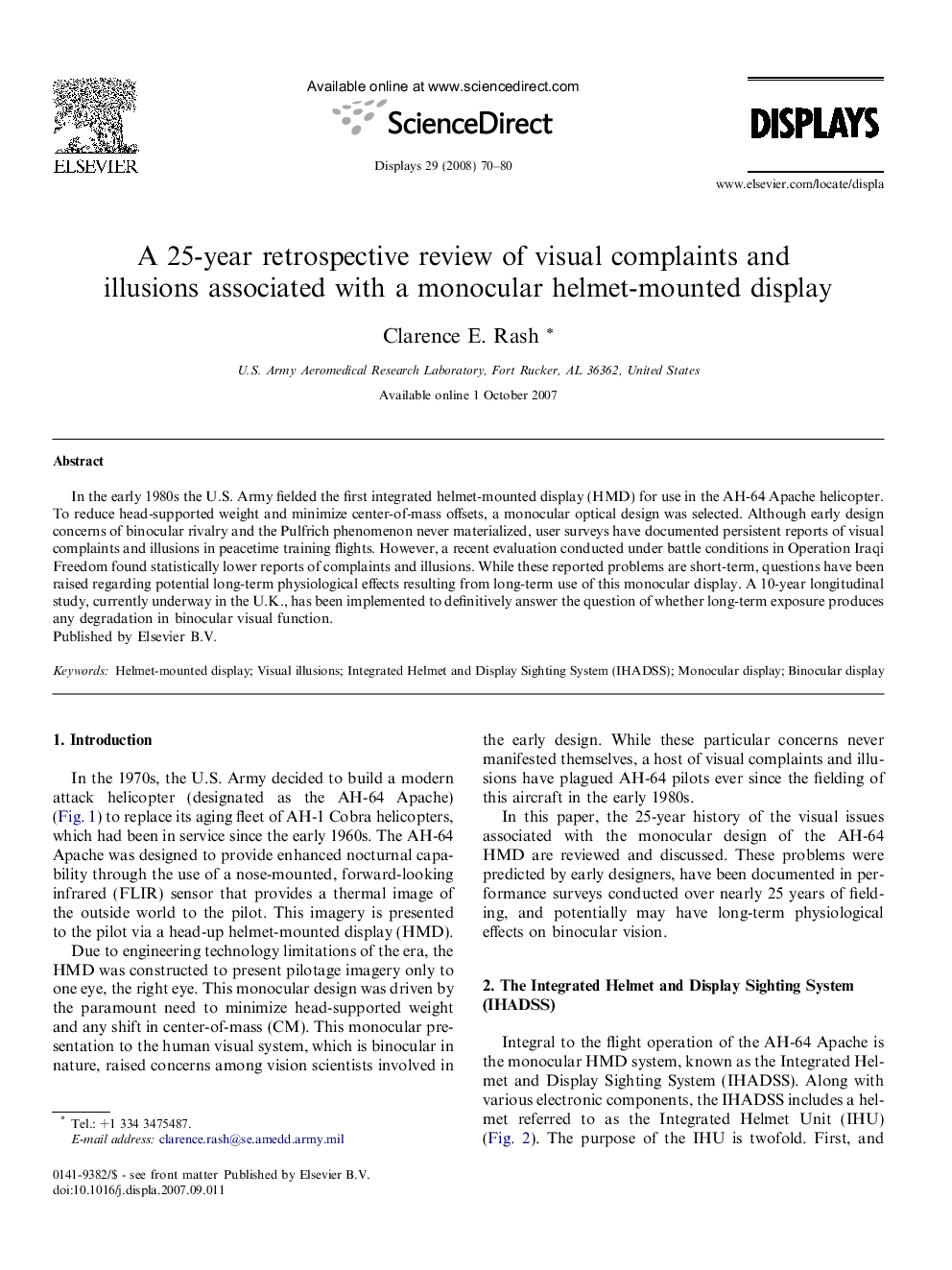| Article ID | Journal | Published Year | Pages | File Type |
|---|---|---|---|---|
| 537991 | Displays | 2008 | 11 Pages |
In the early 1980s the U.S. Army fielded the first integrated helmet-mounted display (HMD) for use in the AH-64 Apache helicopter. To reduce head-supported weight and minimize center-of-mass offsets, a monocular optical design was selected. Although early design concerns of binocular rivalry and the Pulfrich phenomenon never materialized, user surveys have documented persistent reports of visual complaints and illusions in peacetime training flights. However, a recent evaluation conducted under battle conditions in Operation Iraqi Freedom found statistically lower reports of complaints and illusions. While these reported problems are short-term, questions have been raised regarding potential long-term physiological effects resulting from long-term use of this monocular display. A 10-year longitudinal study, currently underway in the U.K., has been implemented to definitively answer the question of whether long-term exposure produces any degradation in binocular visual function.
